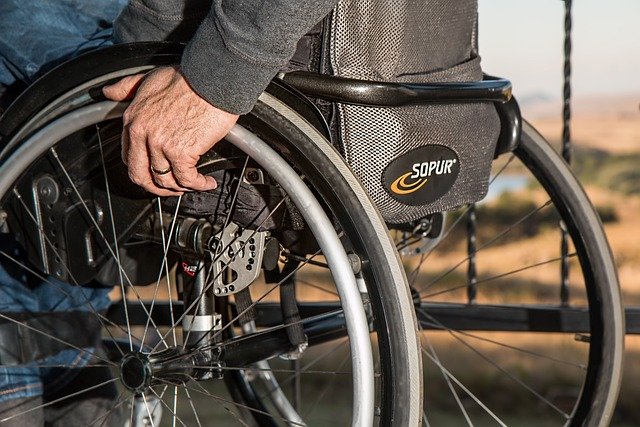Understanding Mobility Device Selection: Key Considerations and Insights
Selecting the right mobility device goes beyond comfort—it often involves understanding lifestyle needs, physical conditions, and practical features. Individuals and caregivers navigating this choice often explore how different mobility aids align with daily routines, terrain adaptability, and independence goals. With multiple types and technologies available, informed selection can hinge on lesser-known factors like adjustability, storage ease, and long-term support. More insights into what people weigh when comparing options often help shape that decision.

What Makes the Best Mobility Scooters Stand Out?
The best mobility scooters combine reliability, comfort, and practical features that enhance daily living. Key characteristics include adequate weight capacity, sufficient battery range for your typical travel distance, and appropriate speed settings for your environment. Three-wheel models offer better maneuverability in tight spaces like shopping centers, while four-wheel scooters provide enhanced stability on outdoor terrain.
Premium models often feature adjustable seats with armrests, LED lighting systems, and storage compartments. Battery life varies significantly between models, with some offering 15-20 miles per charge while others provide shorter ranges suitable for indoor use. Consider your primary usage scenarios when evaluating different scooter types.
How Do Lightweight Wheelchairs Compare to Mobility Scooters?
Lightweight wheelchairs serve different mobility needs compared to scooters, typically weighing between 15-30 pounds versus scooters that can weigh 100+ pounds. Manual lightweight wheelchairs require upper body strength or caregiver assistance, while electric wheelchairs offer powered mobility in a more compact form than most scooters.
Transport considerations also differ significantly. Many lightweight wheelchairs fold completely flat and fit in car trunks, making them ideal for frequent travelers. Scooters often require vehicle lifts or disassembly for transport, though some compact models can be partially broken down for easier loading.
Essential Mobility Aid Comparisons for Your Needs
When conducting mobility aid comparisons, evaluate factors beyond basic functionality. Consider your living environment, such as doorway widths, flooring types, and storage space availability. Indoor users might prioritize tight turning radius and quiet operation, while outdoor enthusiasts need weather resistance and robust suspension systems.
Battery technology represents another crucial comparison point. Lithium-ion batteries typically last longer and charge faster than traditional lead-acid batteries, though they cost more initially. Some devices offer removable batteries for convenient charging, while others require plugging in the entire unit.
Why Foldable Mobility Devices Offer Unique Advantages
Foldable mobility devices excel in situations requiring frequent transport or limited storage space. These innovative designs often feature quick-release mechanisms allowing users to fold their device in seconds. Weight distribution in foldable models varies, with some folding scooters weighing as little as 45 pounds total.
However, foldable designs sometimes involve trade-offs in stability or battery capacity compared to non-folding alternatives. Many foldable devices prioritize portability over maximum comfort features, making them ideal for occasional use rather than all-day mobility support.
| Product Type | Example Model | Key Features | Price Range |
|---|---|---|---|
| 3-Wheel Scooter | Pride Go-Go Ultra X | Lightweight, disassembles easily, 12-mile range | $1,200 - $1,800 |
| 4-Wheel Scooter | Golden Buzzaround XLS | Enhanced stability, 18-mile range, LED lighting | $1,500 - $2,200 |
| Foldable Scooter | Transformer Automatic | Remote folding, airline approved, compact design | $2,000 - $3,500 |
| Heavy-Duty Scooter | Drive Cobra GT4 | 22-mile range, 400lb capacity, full suspension | $2,500 - $4,000 |
Prices, rates, or cost estimates mentioned in this article are based on the latest available information but may change over time. Independent research is advised before making financial decisions.
Professional Assessment and Testing Recommendations
Before finalizing your mobility device selection, arrange for professional assessment through local medical supply stores or occupational therapists. Many providers offer trial periods allowing you to test devices in your actual living environment. This hands-on experience reveals practical considerations that specifications alone cannot convey.
Insurance coverage varies significantly between device types and providers. Medicare may cover mobility scooters when deemed medically necessary, while private insurance policies have different criteria. Documentation from healthcare providers often facilitates coverage approval, making professional consultation valuable beyond device selection.
Selecting the right mobility device requires balancing multiple factors including your physical needs, lifestyle requirements, and budget considerations. Whether you choose a traditional mobility scooter, lightweight wheelchair, or innovative foldable design, prioritize features that enhance your daily independence and comfort. Remember that the best mobility device is one that seamlessly integrates into your life while providing reliable, safe transportation for years to come.
This article is for informational purposes only and should not be considered medical advice. Please consult a qualified healthcare professional for personalized guidance and treatment.




